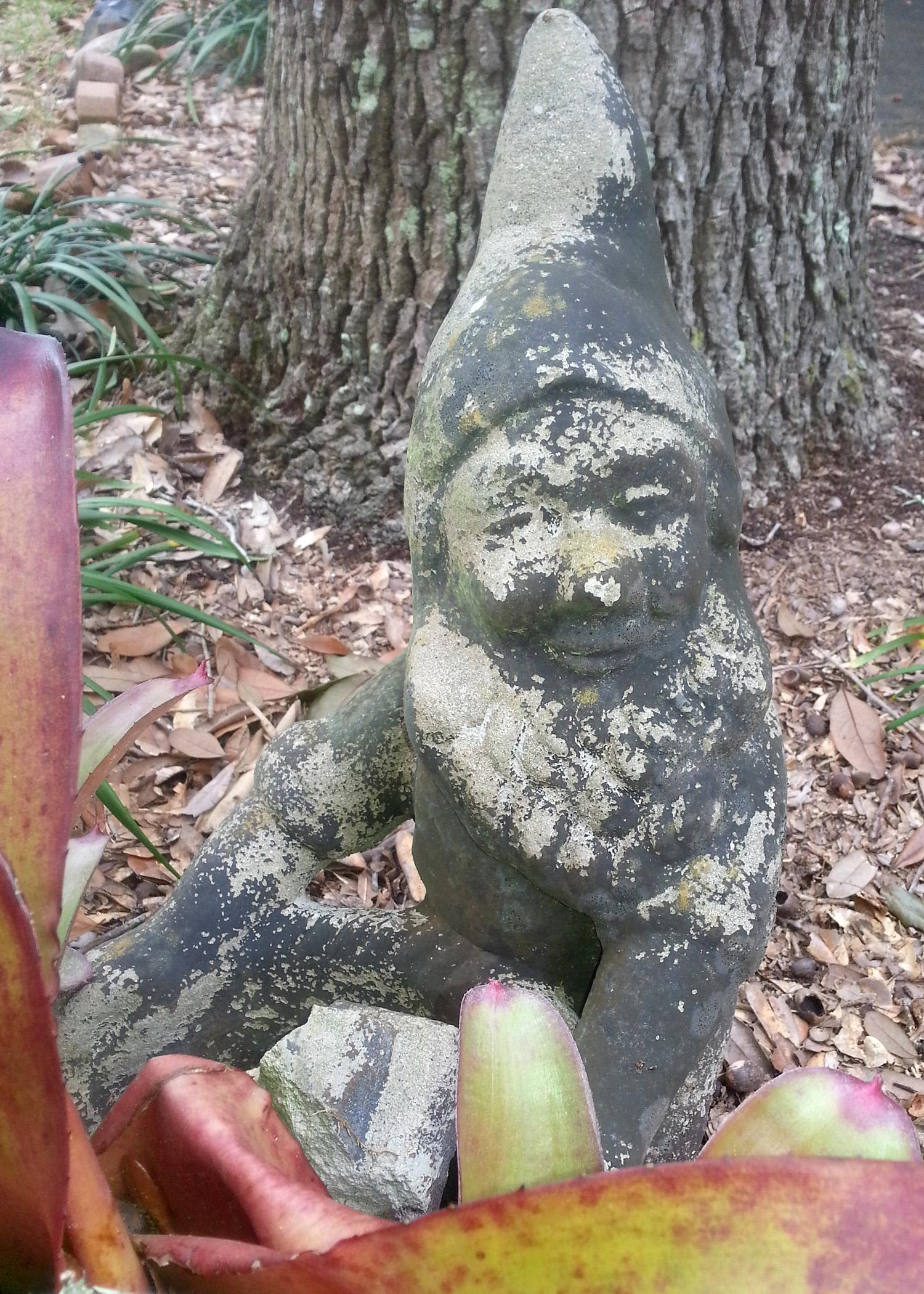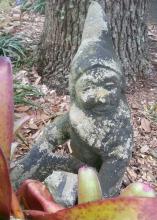Information Possibly Outdated
The information presented on this page was originally released on December 30, 2013. It may not be outdated, but please search our site for more current information. If you plan to quote or reference this information in a publication, please check with the Extension specialist or author before proceeding.
Bring a garden gnome home to your landscape
Even though the weather in the middle of winter prevents much gardening with plants, dedicated and enthusiastic gardeners find ways to keep fun and interest in the yard all year long.
You may have seen garden art in other people’s yards, but have you considered bringing it into your own? A whimsical way to jump right in is to bring home a gnome.
Garden gnomes are creatures of woodland legend that represent the most elemental spirit of the earth. Gnome comes from the Greek word for “earth dweller,” and these statues were first used in German gardens in the mid-1800s.
Early garden gnomes, which were made of terra cotta, were painted and clothed like miners of the day. From the very first, gnomes have been dressed in the little pointed hats we instantly recognize. From Germany, the use of garden gnomes spread to France and England. In parts of Europe, their presence is a status symbol.
Garden gnomes today come in a variety of materials and clothing styles and can be found around the world.
Tradition says garden gnomes bring good luck and goodwill to the gardener who invites them in. Ancient lore says gnomes take care of the gardens they inhabit, enhancing the harvest.
Some believe that at night, gnomes get busy and take care of some of the smaller garden chores. This concept is the basis of the animated movie “Gnomeo and Juliet” in which blue and red gnomes come to life when their owners are not looking.
With all this history and lore, aren’t you ready to try at least one gnome in your garden? Even if you laugh at these stories, garden gnomes have value as yard ornaments and can bring a simple pleasure to your landscape.
Unlike the plants you carefully select and arrange in beds and containers, garden gnomes are completely self-sufficient. Once you bring one home and put it out in your garden, it requires no additional care or feeding. All they need is a little shade to keep them bright and an occasional light rain to keep them shiny. You might even find yourself offering them some gentle words of encouragement every once in a while.
Garden gnomes have a totally unexpected bonus benefit. They are said to appreciate language skills, so brush up your high school foreign language skills by referring to your gnome in another language. In Norway they are called Nisse, the one who protects farm animals. They are called dude in Albania, which sounds more like a California greeting, but if the gnomes like it, who cares?
So this winter as you’re stuck inside dreaming of warm days in the garden, shop for a garden gnome to join the family. Yard art is a fun way to express your garden personality and a great way to do that is with a gnome or two in the garden.








